Rights
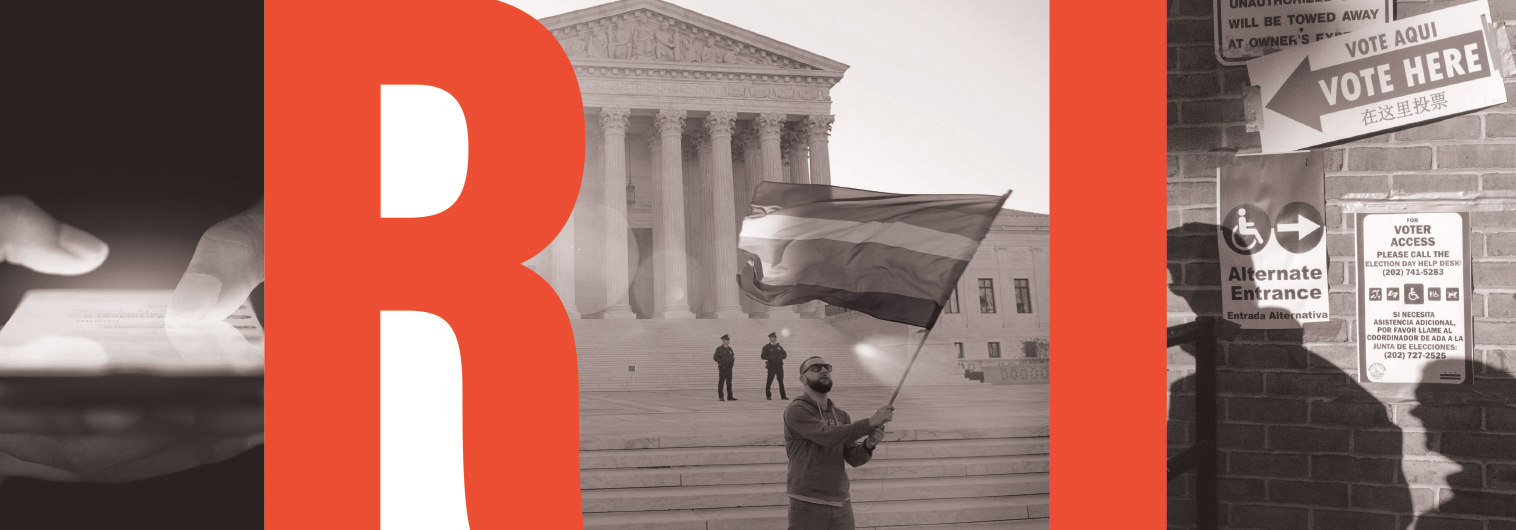

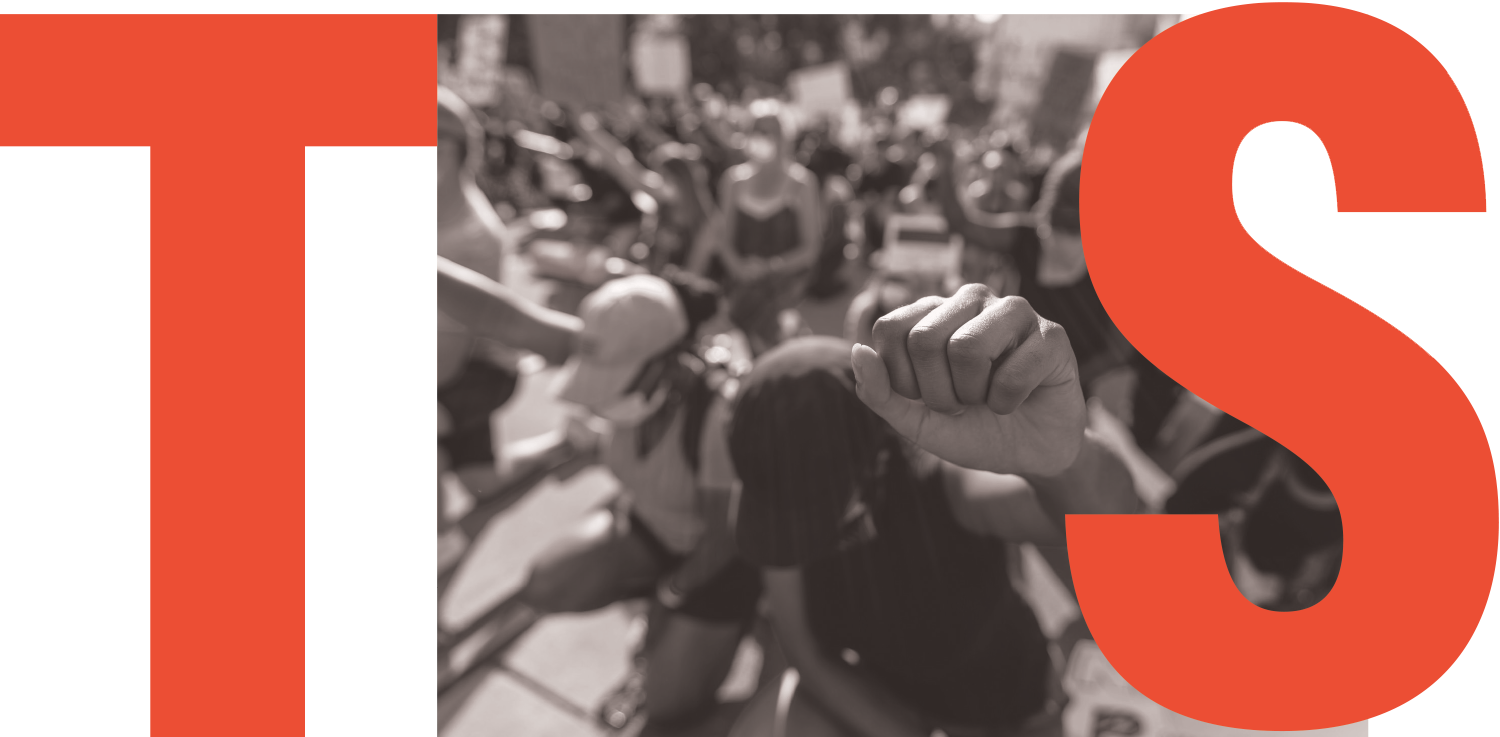
Rights
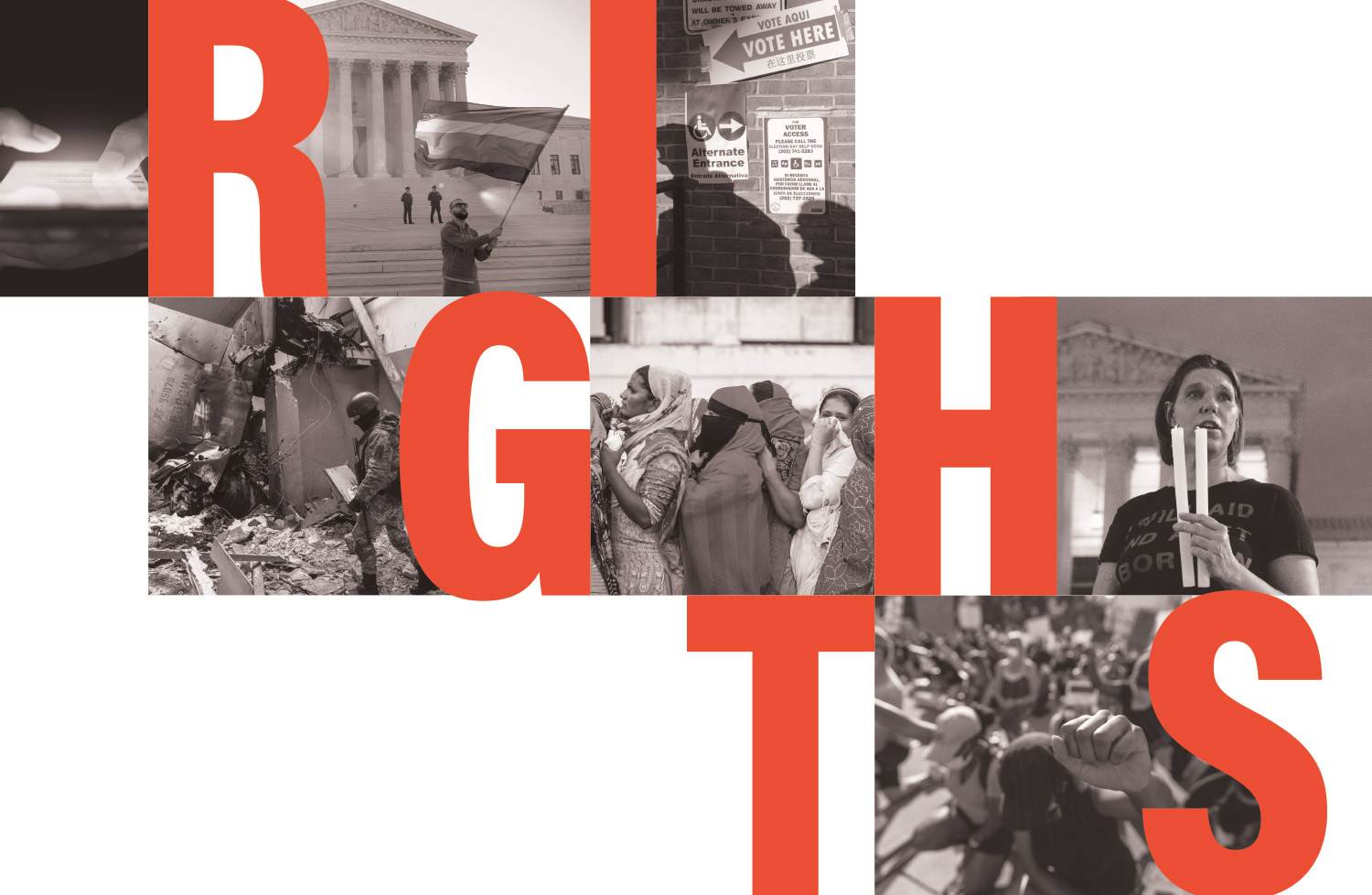
The justices’ busy June capped a tumultuous run of history-making events, at home and abroad: Continuing fallout from the 2020 presidential election, including the investigation into the January 6, 2021, assault on the U.S. Capitol and the flurry of laws passed in numerous statehouses adding hurdles for voters and, in some cases, increasing the power of state officials to overturn results.
Efforts to whitewash material taught in public schools, from slavery to gender identity and sexuality, and a parallel rise in fearmongering rhetoric against the LGBTQ+ community. The rise of authoritarian leaders in countries across the globe and Russia’s ongoing invasion of Ukraine, provocations that have stymied global coalitions.
At such a moment, the rule of law — and the role of the law — has rarely felt so important. And Berkeley Law’s faculty and students are answering the call.
“Basic rights are endangered in the United States and across the world,” Dean Erwin Chemerinsky says. “Law professors, with their expertise and influence, have a special role to play in fighting for liberty and equality. Berkeley Law, because of its terrific faculty, its clinics, its centers, and more generally its public mission, is well-positioned to make a real difference.”
America’s most-cited constitutional law scholar, Chemerinsky is working tirelessly to try and stem the tide, writing amicus briefs, scholarly articles, books, and op-eds. As president of the Association of American Law Schools, he has prioritized how law schools can help solve the problems of the day. As dean, he’s nurturing a culture of action from scholars and students alike.
“I went to law school because I believed that law was the most powerful tool for social change. I continue to believe that, though we are at a very discouraging time,” Chemerinsky says. “I hope that through my opinion writing, my scholarship, and my work as a lawyer that I can help to be part of using law to protect people’s rights and make a positive difference.”
Stepping forward
Everyone saw it coming, from the moment then-Senate Majority Leader Mitch McConnell refused to consider Merrick Garland’s nomination to the Supreme Court to when Justice Ruth Bader Ginsburg died just weeks before the 2020 election, giving President Donald Trump his third nomination to the highest court.
“The last 20 years of my life have been prepping me for this moment,” says Bridges, the faculty director of Berkeley Law’s Center on Reproductive Rights and Justice. “Right now is this opportunity for me to share this expertise I’ve aggregated over the past two decades and try to make it as accessible to as many audiences as possible. I think it’s really important for people to understand what’s at stake with the reversal of Roe.”
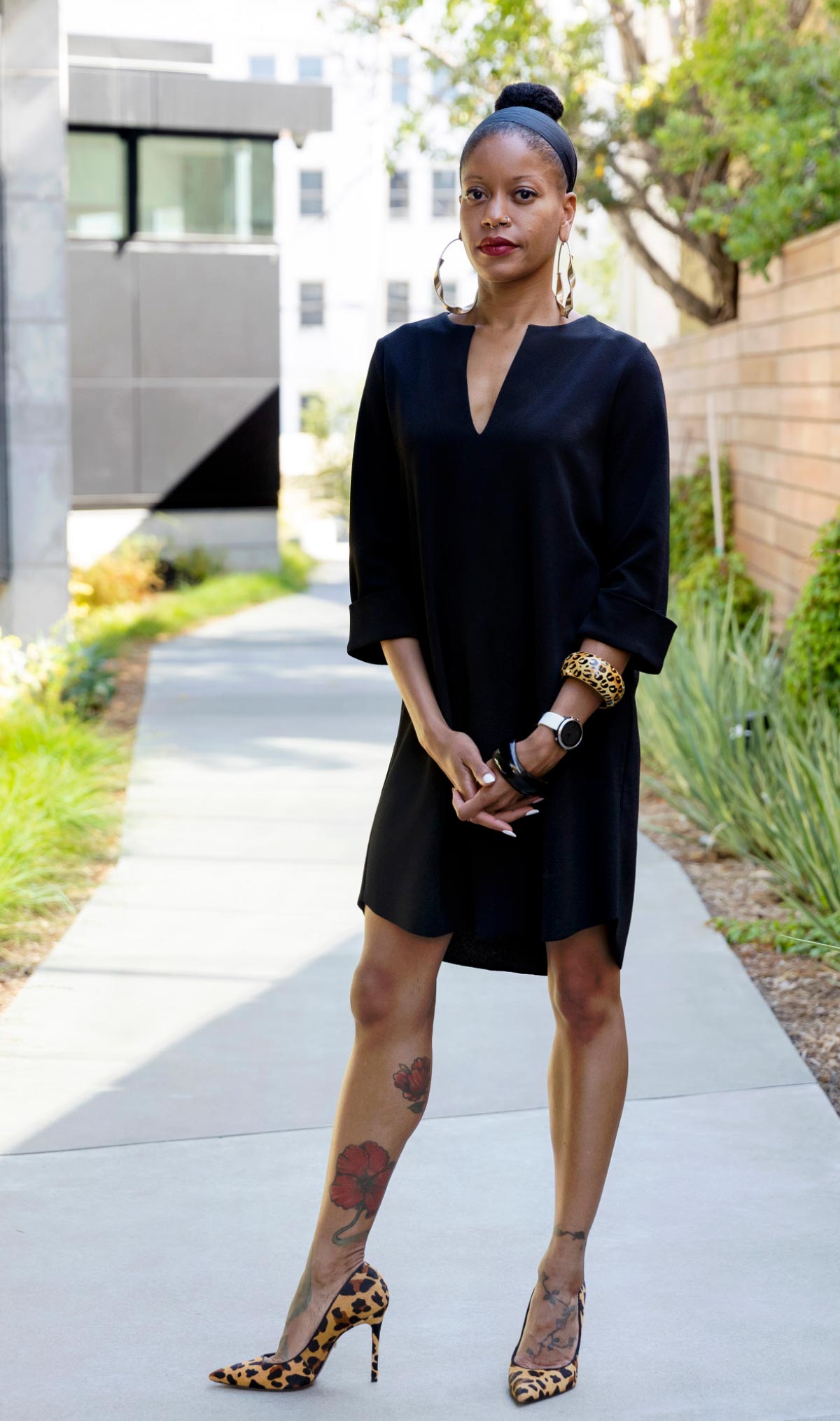
“I think it’s a failure of our imaginations to conceptualize the reversal of Roe as just discrete, as having no relationship to, for example, the attack on transgender and non-binary people that’s happening now,” Bridges says.
Stepping forward
Everyone saw it coming, from the moment then-Senate Majority Leader Mitch McConnell refused to consider Merrick Garland’s nomination to the Supreme Court to when Justice Ruth Bader Ginsburg died just weeks before the 2020 election, giving President Donald Trump his third nomination to the highest court.
“The last 20 years of my life have been prepping me for this moment,” says Bridges, the faculty director of Berkeley Law’s Center on Reproductive Rights and Justice. “Right now is this opportunity for me to share this expertise I’ve aggregated over the past two decades and try to make it as accessible to as many audiences as possible. I think it’s really important for people to understand what’s at stake with the reversal of Roe.”
Now that the impact is here, Bridges says, it still hurts. And she is clear-eyed about what is likely to come next. A number of other major decisions that involve substantive due process — including Obergefell v. Hodges, which in 2015 legalized same-sex marriage — could be next up for reconsideration by the court.
“I think it’s a failure of our imaginations to conceptualize the reversal of Roe as just discrete, as having no relationship to, for example, the attack on transgender and non-binary people that’s happening now,” Bridges says.
Bridges sees a dual role for herself as a professor: Someone who imparts information and thoroughly teaches her students, and also as a sounding board and a resource for what she calls their “rebellious energy.”
“Part of the value that I give students in a classroom is to demonstrate that none of this is inevitable … to show the arc of justice and to remind them that this moment was created — and that they can create a different moment in the future,” she says. “My job is to empower critical thinkers, people who think creatively, people who don’t have a sense of inevitability, people who are not overly cynical. And maybe give them a sense of history, so they know the present isn’t inescapable.”
Who Bears Responsibility for Refugees?
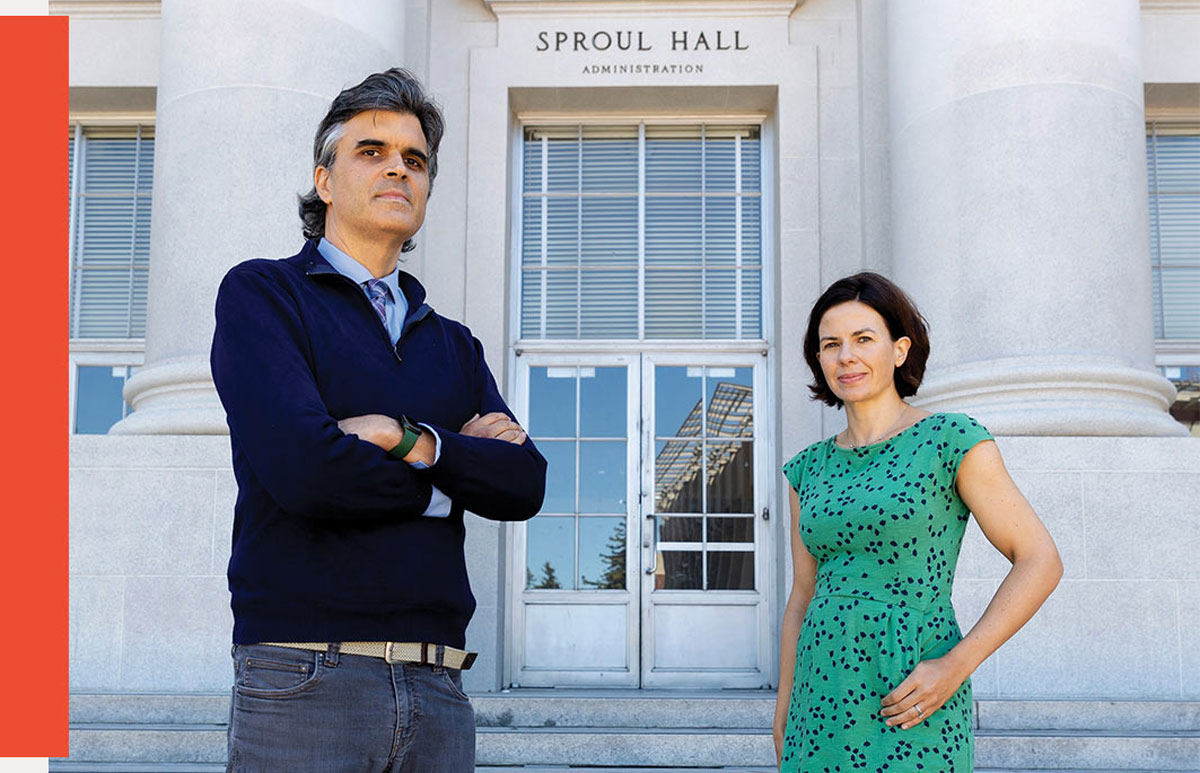
ven before the United States’ withdrawal from Afghanistan in August 2021 and Russia’s invasion of Ukraine earlier this year, the international community was struggling with how to work with refugees from a multitude of conflicts, stretching from Syria to Venezuela.
According to the office of the United Nations High Commissioner for Refugees, there were more than 27 million refugees at the end of 2021, with nearly 5 million others seeking asylum abroad.
In 2018, the U.N. General Assembly affirmed the Global Compact on Refugees, which laid out a key principle: Responsibility for refugees should be shared to ease the burden on the small number of developing nations that host the vast majority.
But are world powers shouldering that burden — and how should they do it? Berkeley Law Professors Katerina Linos and Seth Davis organized a spring 2021 symposium tackling the problem, and the scholarship from it was published as a special California Law Review issue in June.
“The rights of refugees are central to international human rights efforts, because the actors normally responsible for protecting human rights — the refugees’ home states — are by definition unable or unwilling to do so, and so they’ve left their home country to seek protection elsewhere,” says Linos, co-director of the school’s Miller Institute for Global Challenges and the Law. “Refugee law is an unusual body of law, in that we protect refugees not only for their benefit, but also for our own national security reasons.”
The symposium brought together scholars from around the nation, including Yale, UCLA, and Columbia.
In their paper, Linos and Miller Institute Fellow Elena Chachko classify various responsibility-sharing arrangements as either “progressive” or “regressive” based on four factors: hosting commitments, monetary or equivalent contributions, multilateralism, and legally binding agreements.
Davis explores the disparities within countries that host refugees. In Turkey, for example, where nearly 4 million Syrian refugees live, the burden is far more concentrated than across the U.S., although some refugee populations cluster in states or regions in America.
“Responsibility sharing within borders needs more attention, not least because disparities within countries can fuel xenophobic backlash against refugees,” Davis says. “The irony is that wealthy countries that have failed to take their fair share of international responsibility for refugees have taken greater care to ensure responsibility sharing within their borders. That’s true of the U.S. and some European countries as well.”
In between the symposium and the California Law Review issue’s release, both the Afghanistan withdrawal and the invasion of Ukraine prompted additional waves of refugees — and elevated the crisis in U.S. and European Union policy debates.
“As we move towards a world where we once more sharpen distinctions between democracies and authoritarian regimes, welcoming refugees once more becomes part of our humanitarian, but also strategic and economic calculus,” Linos says. “The Europeans are seeing this firsthand with Ukraine. We are realizing this too.” — Gwyneth K. Shaw
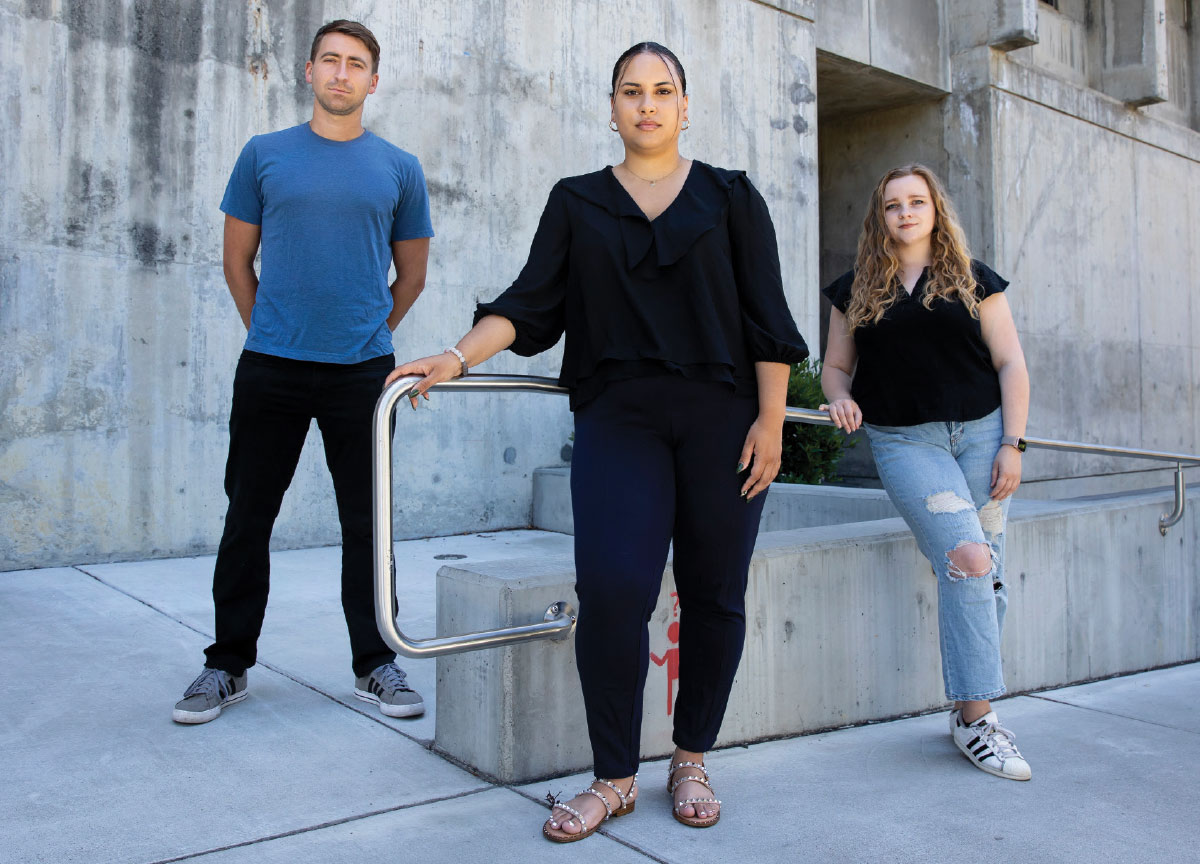
Protecting the ballot box
“Polarization characterizes the retail experience of voting in America. In some states, it has never been easier to vote and register to vote; in others, it has gotten much, much harder than it has been in a long time,” says Professor Emily Rong Zhang, a former voting rights attorney whose research has delved into issues including voter ID laws and efforts to make redistricting less partisan. “The latter is due to aggressive restrictive voting laws passed by states and a Supreme Court that has shackled much of the federal courts’ and federal legislation’s ability to ensure some minimum standards of access to the ballot.”
It’s unclear exactly what impact these new laws will have on the outcomes of the November elections at the state, local, and federal level. Nevertheless, Zhang says there are plenty of things lawyers — and law students — can do, from volunteering with the Lawyer’s Committee for Civil Rights’ election protection hotline to poll monitoring and pitching in during post-election litigation.
“There is so much work to be done to rebuild our legal and democratic institutions,” Zhang says. “I’m excited to be teaching the many wonderful lawyers who will go on to do that important work.”
A group of Berkeley Law students found another way to tackle the issue this spring: The student-led Election Law @ Berkeley Law teamed up with the Democracy Project at Berkeley, run by students at the university’s Goldman School of Public Policy, for Democracy Summit 2022, which they hope will be an annual event. Election Law @ Berkeley Law’s Co-President Sara Clark ’23 highlighted two goals for the inaugural summit: Empowering students to advocate for democracy as citizens, candidates, or activists, and building a cross-campus collaboration with the Goldman group.
“We wanted to give students the tools and inspiration to continue fighting for a more just and equal American political system, even in difficult times,” she says. “Doing the event in tandem allowed us to draw on the resources, expertise, and knowledge of our friends in the policy space and have an event as interdisciplinary as democracy-saving work needs to be.”
Artistic Freedom Under Attack
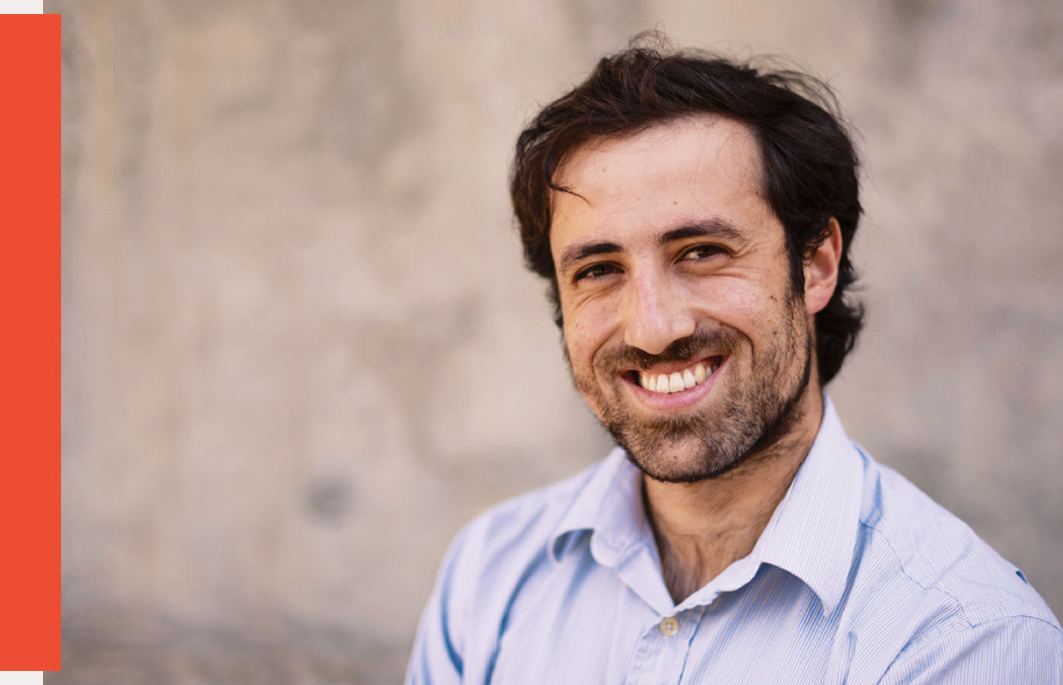
tudent initiative — as well as indignation — are helping to expose the growing suppression of artistic freedom in Eastern Europe.
Annabelle Wilmott ’22, who helped launch Berkeley Law’s first student-led project serving the artistic community (Arts and Innovation Representation), learned about the issue working for the Artistic Freedom Initiative before law school. Eager to connect her new school and former employer, which strives to protect artists from persecution and censorship, she saw that effort crystallize with a recent jarring report, Systematic Suppression: Hungary’s Arts & Culture in Crisis.
Featured by National Public Radio, it describes how Hungarian Prime Minister Viktor Orbán has implemented constitutional, legislative, and administrative changes to exert increasing control over the arts — and how Hungary’s previously independent arts and culture sector “has been refashioned as a mechanism for advancing a singular ethno-nationalist narrative.”
Wilmott and Jonathan Abrams ’22, who co-led the student group, coordinated Berkeley Law’s research effort. Ensuing co-leaders Lainey Meiri ’23 and Megan Taing ’22 worked with Vanessa Azad ’21 LL.M., Simone Lieban Levine ’21, AFI staff, and Columbia University’s Harriman Institute on the report, which incorporates interviews with Hungarian artists and offers policies to bolster protections.
“Projects like this allow students to strengthen their research and writing skills, learn about international law and artistic freedom, and advocate for artists at risk,” says Wilmott, a former U.S. State Department Fulbright Fellow.
The students examined Hungary’s constitution, relevant international law treaties, state mechanisms of suppression, third-party intimidation tactics, misuse of laws to stifle creative expression, and how Orbán’s party (Fidesz) fuels self-censorship among Hungarian artists.
One example came in 2018, when the hit musical Billy Elliot was staged in Budapest. Scathing reviews by pro-Orbán media outlets (one called it “pointed and unrestrained gay propaganda”) prompted the theater to cancel the last 15 performances.
“Media conglomerates owned by pro-Fidesz investors have sought to turn the Hungarian public against dissident artists,” Abrams says. “We’re also seeing the use of criminal defamation laws to prosecute prominent satirists for criticizing the Hungarian state.”
Students also researched the situation in Poland and Russia. While neither has built state control of the arts into national legislation like Hungary, both are showing ominous signs.
“They have likewise engaged in an alarming pattern of art censorship for offending traditional national morality,” Abrams says. “Museum directors have been removed for curating controversial exhibits, artists jailed for displaying works that offend religious feeling, and defamation laws weaponized to target artists critical of the state.” — Andrew Cohen
Standing up for privacy
“The biggest challenge to freedom from constant surveillance is how ubiquitous surveillance technologies have become, both online and offline,” Crump says.
Technology has spilled across the legal landscape as comprehensively as it has society as a whole. Other Berkeley Law scholars, including Professors Andrea Roth and Rebecca Wexler, look at technology’s impact on criminal cases, from algorithms that can be accessed by prosecutors but not defendants to how wide-ranging DNA databases raise profound privacy issues.
With cell phone evidence already routinely cropping up in criminal prosecutions — from high-profile ones like those against January 6 insurrectionists to everyday retail theft cases — it’s not much of a jump to imagine similar surveillance of women, particularly in states like Texas, which have incentivized citizens to snoop, Crump says.
“It’s just very hard to go anywhere or do anything these days without leaving a trail of digital breadcrumbs,” she says. “From using search engines to look for abortion services to using a cell phone to navigate to a clinic, this sort of evidence could well be used by a prosecutor enforcing a criminal prohibition on abortion.”
The Samuelson Clinic has pushed for broad change and California is making strides, Crump says — including with the California Privacy Protection Agency — which is led by Professor Jennifer M. Urban ’00, the clinic’s director of policy initiatives. A federal law to broaden safeguards for consumers is taking shape, too.
Clinics are a critical bridge between scholars and policymakers, Crump explains, pulling together the wide variety of areas in which digital surveillance is at issue.
“At the end of the day, weaving digital technologies into everyday life is just plain useful. We all like using our smartphones for driving directions and being able to look things up on Google,” she says. “For the most part, our policy goal should be to figure out how to take advantage of these technologies while minimizing downstream consequences.”
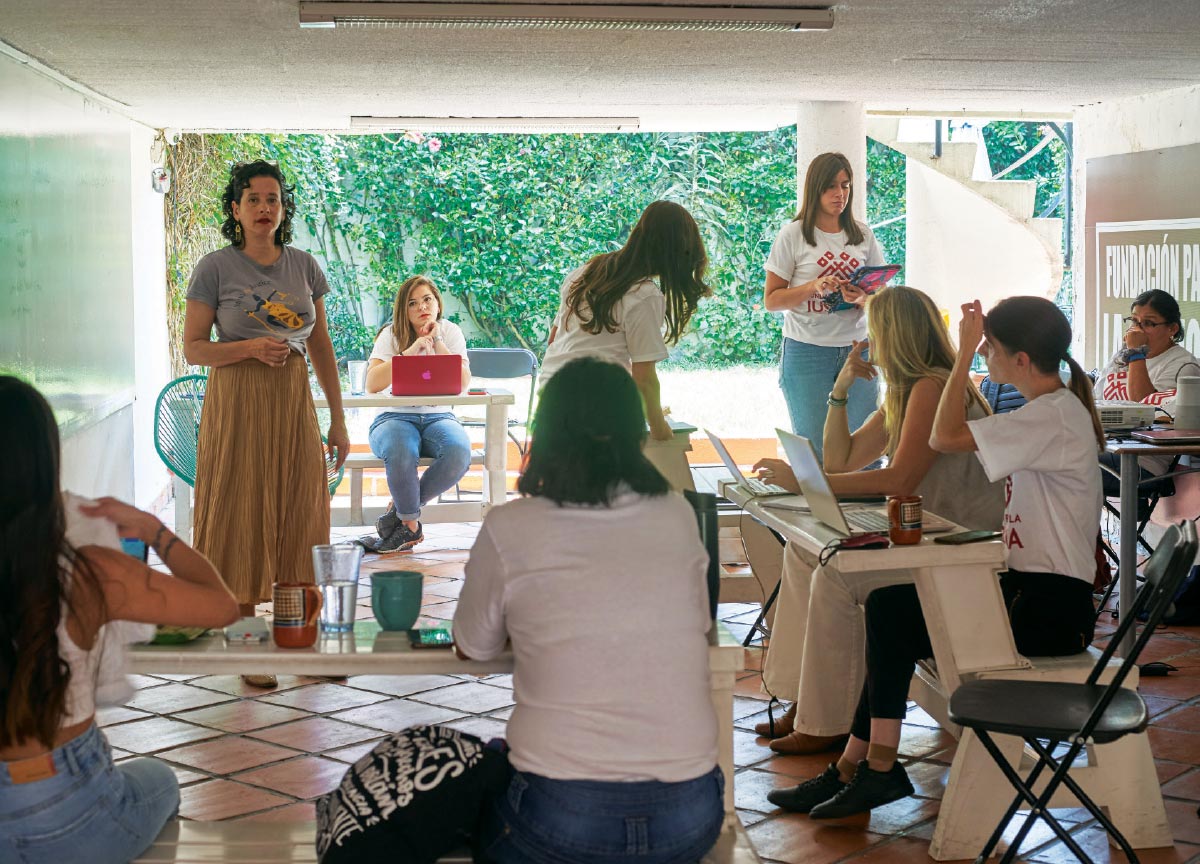
Defending the vulnerable
“This is a global issue. Governments and private companies increasingly use surveillance technology against rights defenders,” clinic Co-Director Roxanna Altholz ’99 says of the type of spying done to Delgadillo. “The Mexican government would like to present the cartel as the problem, but the reality is that it is no longer possible to distinguish between the cartels and the government. State agents are collaborating with cartel members in pursuit of economic interests.
“And the state is targeting rights defenders and journalists who are exposing state kleptocracy.”
Altholz, clinic Co-Director Laurel E. Fletcher, and students working with the clinic helped Delgadillo file a criminal complaint against the Mexican attorney general’s office for illegal surveillance. They also developed a key international human rights argument: that the government violated not only the rights of the investigation’s targets, but also those of the victims, since resources were diverted from finding the truth about the massacres Delgadillo and her staff were trying to uncover.
“This organization, and others, are coming under increasing pressure from the government — and are really in the crosshairs of a government with some truly authoritarian tendencies,” Altholz says.
Teaching the Moment
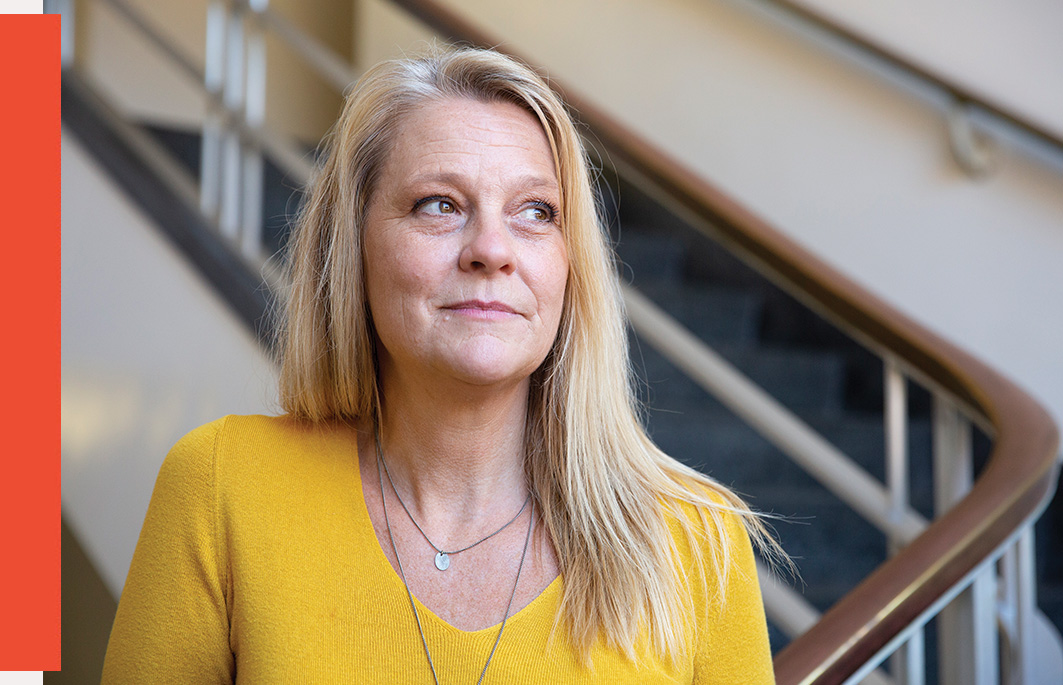
y their first day of class, students in Professor Kristen Holmquist’s spring Constitutional Law course were already well-versed in the arguments about substantive due process. After all, the fall was packed with speculation about the future of Roe v. Wade, from the Supreme Court’s decision to let Texas’ S.B. 8 take effect to the December oral arguments in Dobbs v. Jackson Women’s Health Organization.
The bombshell leak of Justice Samuel Alito’s draft opinion in Dobbs — later revealed as the bulk of the final opinion — came on the same day students took Holmquist’s exam. It rippled through her post-semester discussions with them and, she says, will deeply impact her approach to teaching the course again.
“My students want to believe there’s a there there — that even on the big, political issues, precedent matters,” she says. “I have of course always recognized that Supreme Court justices were in some sense political actors. But I think I genuinely, maybe naively, believed that even in the big cases, they really were doing something different than legislating.
“And after this last term, I just don’t believe it anymore. Maybe there are still guardrails, but they’re not what I thought they were.”
Dean Erwin Chemerinsky, who explored how the court’s change in trajectory may impact legal education in the first episode of his “More Just” podcast, says the sweeping nature of the last term will consume many class discussions.
“I often have said to my students that constitutional law affects people in the most important and intimate aspects of their lives. We saw that in the Supreme Court decisions this term,” he says. “They raise profound questions about the role of the Supreme Court, how the Constitution should be interpreted, and how to protect rights in light of these decisions.”
Holmquist plans to focus more on lower federal and state courts and how they’re interpreting this new guidance from the justices. She always tries to give her students opportunities to make arguments based on current case law. The examples may shift, she says, but the exercise is the same.
“We’ll talk about how to take originalist arguments seriously, and if you want to make a progressive originalist argument, how to do that,” Holmquist says. “I don’t mean to imply our students are all on the same page politically, but they all need to learn to engage historical arguments regardless of their politics now.”
After a semester that spanned the historic appointment of Justice Ketanji Brown Jackson and the upending of several precedents that at least felt settled, Holmquist wants to be realistic, but also optimistic.
“The students are still more hopeful than I am that there are nuggets in these cases — that the doctrines can shift in ways they’d like to see,” she says. “And maybe it’s important to encourage that hope so that in 20 years, when they’re on the bench, they’ll remember that we talked about how much it matters who’s sitting in those chairs.” — Gwyneth K. Shaw
Diversifying the jury box
This year, the clinic released a study examining jury selection in Kansas, which found many of the same entrenched practices unearthed in California. Despite the 1986 Supreme Court ruling in Batson v. Kentucky that established a procedure for enforcing the Constitution’s prohibition against peremptory challenges based on race, the clinic’s report found that Kansas prosecutors removed at least half of the jurors of color in more than half of the cases — and struck all of them in at least one-third of the cases.
Their challenges were often based on racial stereotypes, such as the jurors’ demeanor or appearance, a negative experience with law enforcement, the nature of their employment, or where they live.
Clinical Professor and Death Penalty Clinic Co-Director Elisabeth Semel, who has been litigating Batson-related cases for many years, sees an opportunity for sweeping change. So do the clinic’s students.
“It felt so impactful to be a part of something that would be tangible, lasting, and could be looked to in the future for policy changes,” says Maddy Pilgrim ’22, one of the students who did data analysis and legal research for the project. “I thought we were setting out to set Kansas apart, but really we were documenting that Kansas was just like every state across the U.S.”
Tenacity and urgency
“I feel like that’s my duty. I can’t just sit in the tower and watch while Rome burns, or tell my students, ‘You go out and do something,’” Bridges says. “I feel as if my contribution to the struggle is to put myself out there.
“We’re all unclear about the path forward. But it’s imperative that we do whatever we can.”